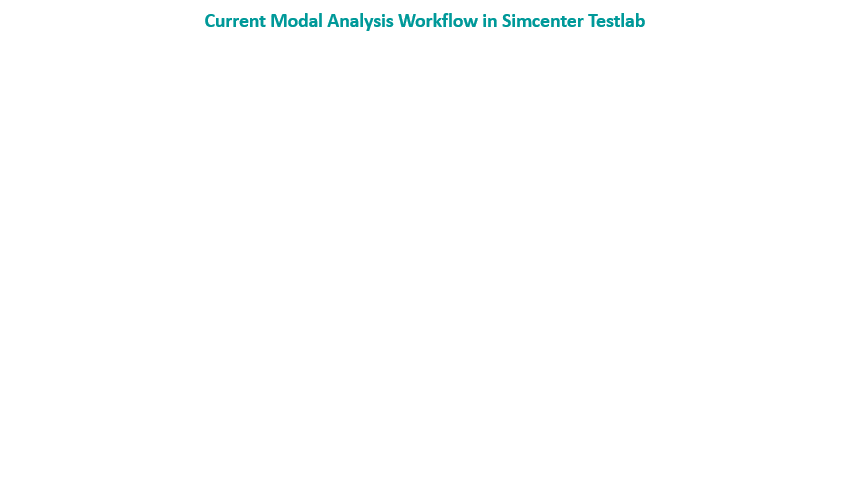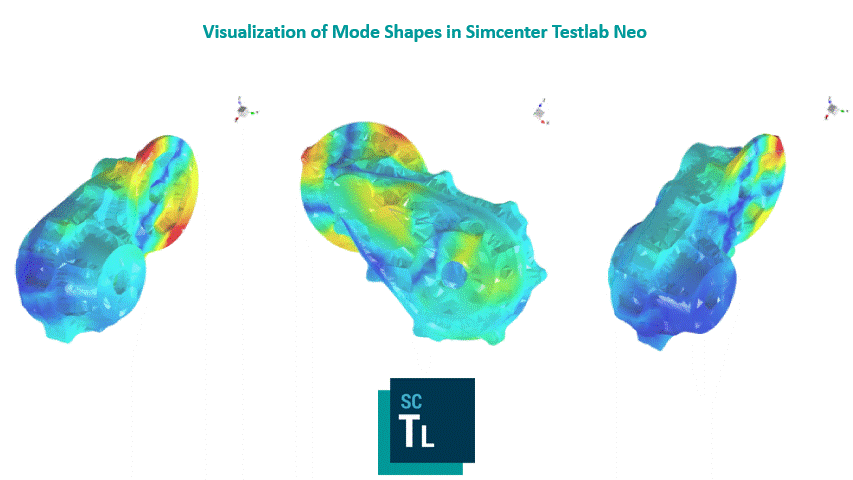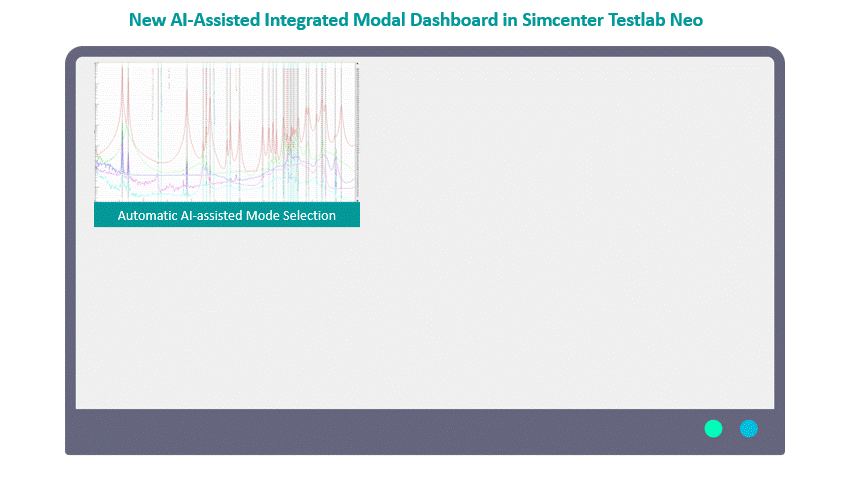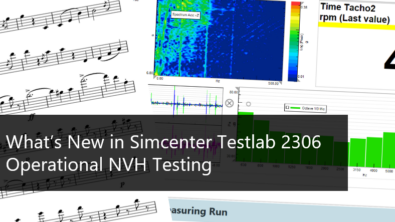Faster and AI-assisted structural dynamics testing workflow starts with Simcenter Testlab Neo

Structural dynamics testing workflow challenges
As an engineer, you know that structural dynamics testing often presents challenges, making the workflow somehow complex, time-consuming, and difficult to execute accurately.
Interpreting the stabilization diagram is not always straightforward. Think about distinguishing between physical and numerical poles, making decisions on multiple closely spaced peaks, handling noise, and selecting poles while considering different model orders, all of which add to the complexity.
Additionally, the modal model identification is a highly iterative process during which many elements must be continuously analyzed and tracked. As you refine your mode selections, you must iterate to evaluate and validate the consequences of your choices. To complete this iterative process, you need to continuously conduct what-if analyses until you ensure that your modal model accurately and efficiently represents all the dynamics observed in the measured Frequency Response Functions (FRFs). This often makes the workflow demanding and time-consuming, and unsurprisingly, these challenges become even more pronounced when analyzing more complex structures.
Go 7X faster and improve testing accuracy with Simcenter Testlab Neo
Things are improving, though! Our next-generation software platform, Simcenter Testlab Neo, combines 40 years of modal testing experience with a tradition of cutting-edge engineering expertise to improve the structural dynamics testing workflow and enhance testing accuracy.
And here’s some big news: we’re excited to announce that the new version of Simcenter Testlab Neo will introduce a completely new interactive dashboard that will use artificial intelligence (AI) to analyze the stabilization diagram faster (reducing the average analysis time from fifteen minutes to about two minutes, hence a reduction factor of about seven times). Moreover, AI enables more efficient differentiation between physical and numerical poles, resulting in more accurate mode selection that closely aligns with expert user choices. These advancements have been rigorously validated through extensive research and jury testing on various complex structures.

Faster and AI-Assisted Modal Analysis Workflow in Simcenter Testlab Neo
Currently, after measuring the FRFs, you switch to Simcenter Testlab Modal Analysis to continue with modal testing, which typically involves the following steps:
- Step 1 – Selecting desirable FRFs: You start by collecting and reviewing the FRFs you want to use. Once satisfied with the selection, it’s time to start identifying the modal model in Polymax.
- Step 2 – Stabilization Diagram and Initial Pole Selection: Now is where things get serious: choose the analysis band and the model order in the Band tab, move to the Polymax one and let the curve fitting happen. As a result, you will now get your stabilization diagram displayed. Select the poles manually or automatically and move to Shapes tab for the next step of the process.
- Step 3 – Calculate Mode Shapes: In the Shapes tab, starting from the selected poles, the modes and residuals are finally computed. Here is where you can finally visualize your mode shapes and do a first verification of the results you are obtaining. This is also the place where, seeing a strange mode shape unrelated to the others, you might start going back to review your pole selection, or move forward to further validate your results.
- Step 4 – Modal Synthesis: The first of these validation steps is done in the Modal Synthesis workbook, where you evaluate how well the poles and modes selected so far can represent the measured FRF set. Seeing peaks in the data not captured by a mode, or an overall bad fit, will also push you to go back to the previous steps and review your pole selection.
- Step 5 – Modal Validation: The final step is then to verify that you didn’t select too many modes to obtain a good reconstruction of the FRF and that these modes satisfy some key quality criteria. Here again, any modification to the model would require going back to the stabilization diagram and adapt the choice of poles.
While this iterative process is essential to the modal analysis workflow, navigating between different tabs and workbooks can be time-consuming (typically taking tens of minutes for experts and up to several hours for novice users, who often struggle to achieve the same level of accuracy). This challenge becomes even more demanding for complex structures with varying modal densities and potential nonlinearities.
However, the next release of Simcenter Testlab Neo will significantly enhance your modal analysis workflow, making it much faster and ensuring more accurate mode selection that closely aligns with expert user choices. Validation shows that the average analysis time has been reduced from fifteen minutes to just two, making it seven times faster.

Two key innovations drive these achievements:
- the introduction of a new Integrated Modal Dashboard with various automation steps,
- the implementation of AI-assisted Automatic Mode Selection.
Let’s briefly review what these capabilities are and how they will help you achieve faster modal analysis processes.
Accomplish more in less time with the Integrated Modal Dashboard
The new Integrated Modal Dashboard will allow you to accomplish more in less time. You will no longer need to switch between different workbooks and tabs as you did before, no more back-and-forth navigation. Everything will be integrated into a single-view dashboard, providing maximum insights, decision-making power, and confidence as you perform modal analysis. Picture all the following panes in front of you carved into one Integrated Modal Dashboard: list of modes and their specs, stabilization diagram with the results of ai-assisted automatic mode selection, modal model synthesis, modal validation, and even the geometry display!
In addition, the dashboard will be interactive and will include various automations, meaning that every time the calculations are refreshed based on the newly selected modes, all corresponding elements will automatically be adapted, allowing you to validate the modes and the model interactively. All these integration, interactivity, and automation elements in the modal analysis workflow of Simcenter Testlab Neo will make the workflow smoother and faster, ensuring that nothing is overlooked.

AI-assisted Automatic Mode Selection in Simcenter Testlab Neo
The new AI-assisted Automatic Mode Selection will select poles, compute modes, and validate them, proven to make the modal analysis workflow almost seven times faster compared to when a typical user selects the modes manually. It will use artificial intelligence (AI) and integrate density-based clustering algorithms[1], trained to deliver the highest level of correlation with expert-selected modes. Whether you’re a novice or intermediate engineer, this feature will enable you to perform like a pro in a smart and efficient way. For the experts among you, we’re confident the results will astonish you, cause to do the full workflow, your valuable time will only be spent on loading the data, specify the settings, and save the results! Most of what lies in between (i.e., the actual modal analysis) will be done automatically in fractions of a second. As such, compared to when you would do the whole workflow manually, you will be able to complete the modal analysis on average seven times faster, saving plenty of valuable time!
We hope we’ve succeeded in getting you excited about what Simcenter Testlab Neo will bring to your Structural Dynamics Testing workflow and how it will contribute to faster, smarter, and more accurate testing.
Stay tuned; we’ll be back soon to share more technical details about the innovations that will be released with the Simcenter Testlab Neo 2506 version.
[1] 1. Tavares, A., Di Lorenzo, E., Cornelis, B., Manzato, S., Peeters, B., Desmet, W., and Gryllias, K. An industrial benchmark study of Automated Modal Analysis using density-based clustering techniques. In Proceedings of the 31st International Conference on Noise and Vibration Engineering (ISMA 2024), Leuven, Belgium, September 2024.


